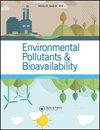Chemical activation of hickory and peanut hull hydrochars for removal of lead and methylene blue from aqueous solutions
Q3 Chemical Engineering
引用次数: 48
Abstract
Abstract Hickory and peanut hydrochars were chemically activated with KOH and H3PO4 and tested for their ability to remove methylene blue and lead from aqueous solutions. The physicochemical characteristics of the activated hydrochars determined were surface area, pore volume, and elemental composition. Kinetics and isotherm studies were then conducted on methylene blue adsorption. Compared to their nonactivated counterparts, the chemically activated hydrochars had higher surface areas and more functional groups. Activated hydrochars also had greater methylene blue and lead adsorption rates, which can be attributed to the improved physicochemical characteristics. H3PO4 activated hydrochars removed more contaminants than the corresponding KOH ones.山胡桃木和花生壳水炭的化学活化去除水溶液中的铅和亚甲基蓝
摘要用KOH和H3PO4对山核桃和花生水炭进行化学活化,并测试其从水溶液中去除亚甲基蓝和铅的能力。测定的活化水炭的物理化学特性包括表面积、孔隙体积和元素组成。然后对亚甲基蓝的吸附进行了动力学和等温线研究。与未活化的对应物相比,化学活化的水炭具有更高的表面积和更多的官能团。活化水炭对亚甲基蓝和铅的吸附率也较高,这可归因于理化特性的改善。H3PO4活化的水炭比相应的KOH水炭去除了更多的污染物。
本文章由计算机程序翻译,如有差异,请以英文原文为准。
求助全文
约1分钟内获得全文
求助全文
来源期刊
CiteScore
1.62
自引率
0.00%
发文量
0
审稿时长
1 months
期刊介绍:
Chemical Speciation & Bioavailability ( CS&B) is a scholarly, peer-reviewed forum for insights on the chemical aspects of occurrence, distribution, transport, transformation, transfer, fate, and effects of substances in the environment and biota, and their impacts on the uptake of the substances by living organisms. Substances of interests include both beneficial and toxic ones, especially nutrients, heavy metals, persistent organic pollutants, and emerging contaminants, such as engineered nanomaterials, as well as pharmaceuticals and personal-care products as pollutants. It is the aim of this Journal to develop an international community of experienced colleagues to promote the research, discussion, review, and spread of information on chemical speciation and bioavailability, which is a topic of interest to researchers in many disciplines, including environmental, chemical, biological, food, medical, toxicology, and health sciences.
Key themes in the scope of the Journal include, but are not limited to, the following “6Ms”:
Methods for speciation analysis and the evaluation of bioavailability, especially the development, validation, and application of novel methods and techniques.
Media that sustain the processes of release, distribution, transformation, and transfer of chemical speciation; of particular interest are emerging contaminants, such as engineered nanomaterials, pharmaceuticals, and personal-care products.
Mobility of substance species in environment and biota, either spatially or temporally.
Matters that influence the chemical speciation and bioavailability, mainly environmentally relevant conditions.
Mechanisms that govern the transport, transformation, transfer, and fate of chemical speciation in the environment, and the biouptake of substances.
Models for the simulation of chemical speciation and bioavailability, and for the prediction of toxicity.
Chemical Speciation & Bioavailability is a fully open access journal. This means all submitted articles will, if accepted, be available for anyone to read, anywhere, at any time. immediately on publication. There are no charges for submission to this journal.

 求助内容:
求助内容: 应助结果提醒方式:
应助结果提醒方式:


